Economy
{fastsocialshare}
... the naval base
The main "lung" of the Villa de Rota is without any doubt the US military facilities of the Naval Base of Rota, which annually introduces 600 million euros not only in our population but also in the Bay of Cádiz. Although there are no official studies on the economic impact of military deployment, Mayor José Javier Ruiz Arana (July 2016, PSOE) indicated that approximately two-thirds of the local GDP comes from the Base.

Among the different positive points of the impact of the Base de Rota it should be noted that our Villa, in comparison to other towns in the region, has experienced a high standard of living that has been observed in the last two generations. They emphasize the education (high number of inhabitants with academic and/or university studies), culture, local commerce, increase of the population and therefore of obtained local taxes, enrichment and prosperity of many sectors like the taxi, the construction, restoration and services among others. But what stands out most is the increase in the price of rental housing, our Villa having more than 1000 houses rented by Americans that, at an average price of 1500 euros, leading to a monthly income of 1.2 million euros to families ( data of July 1016). The maximum price paid by the US government is 2,500 euros per month.
...the tourism
Tourism is our second most powerful economy that naturally depends on the Villa itself, although in winter the low season is quite noticeable. Our population has more than 4,200 accommodation places: 8 hotels, 8 hostels and pensions, 3 tourist apartments, 1 campsite and numerous homes for tourism purposes registered in the Junta de Andalucía.a.
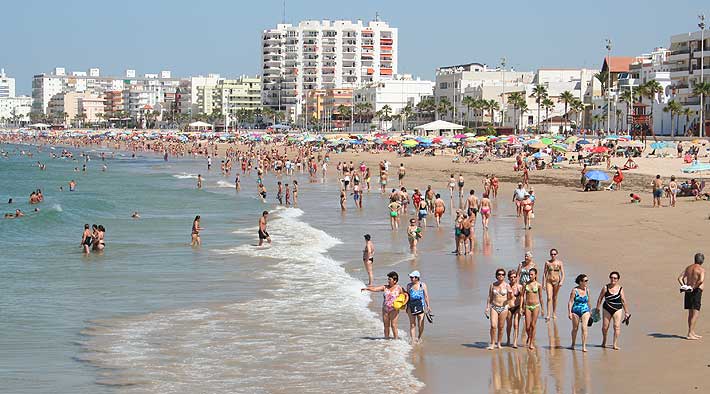
On the other hand, there is a large number of clandestine dwellings that cannot be computed by overnight stays, either by organizations such as HORECA, the Junta de Andalucía or the same registry prepared by the National Police. A third group is comprised of second homes, since in summer and certain times of the year, more people than those advised for their safety stay overnight. In short, you can not determine an official number of tourists, passers-by and visitors to our Villa, but it is estimated that in the month of August it triples its population exceeding 110,000 inhabitants, including Rota Sur (city), Rota Norte (Costa Ballena) and rural areas) and the population of the Rota Naval Base.
...agriculture and fishing
Next, we will highlight the oldest and most traditional economic resources such as fishing and agriculture.
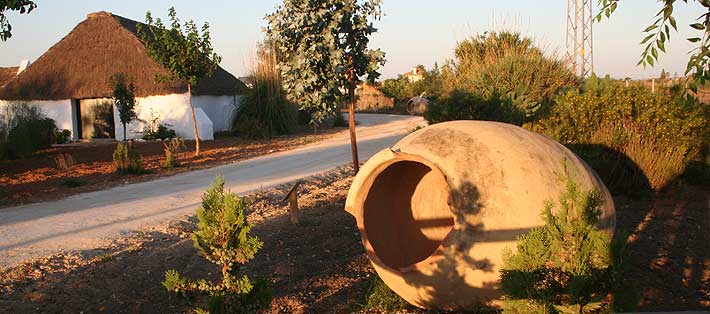
Within the traditional roteña agriculture the mayetería has special prominence, that in its time of glory it gave great popularity to the tomato and the roteña pumpkin. The main rainfed crop is cotton, with arable land occupying a total of 4,311 hectares. As for woody crops, they occupy 272 hectares, with the vine exponent being the maximum and the Tintilla de Rota being made from its fruit..
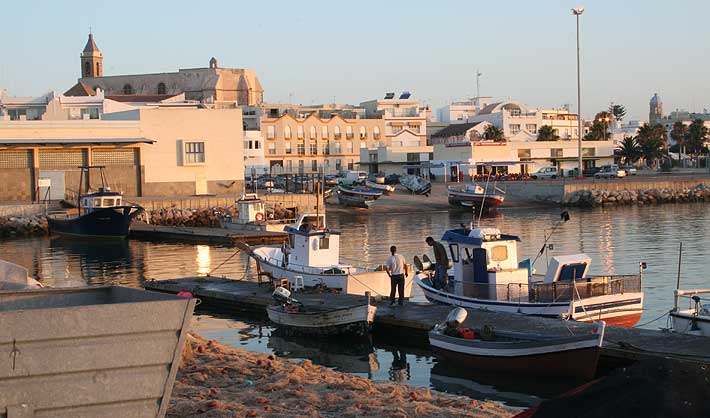
Regarding fishing, it is mainly artisanal and for local consumption. Among the captures include a native fish of the coast as is the urta, main protagonist of the traditional local dish "Urta a la Roteña", as well as the emblematic sea urchins, spider crab, ortiguillas, sea bass, golden, mackerel, anchovy, among others.
...industry
Industrial roots are scarce and Rota lacks high-level industries. The industrial initiatives are distributed by the 2 industrial estates - one under construction and with little business presence yet - and a business school. Between the activities, they emphasize the industry of feeding -cheeses and local wine, bakeries and bakers-, the carpentry and manufacture of furniture, the confection of uniforms and labor costumes, graphic arts...
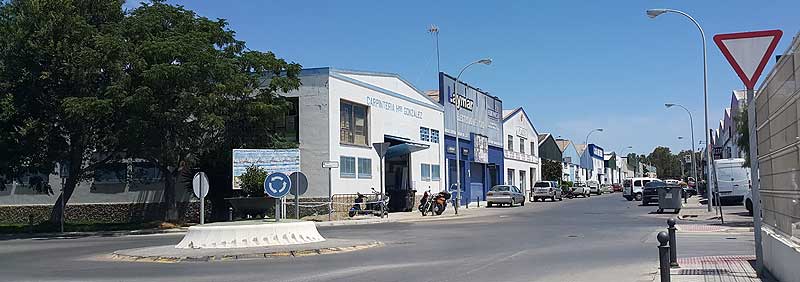
There is a third industrial zone within the facilities of Naval Base, inaugurated in February 2016. It is an Industrial Area of Support to the Maintenance of Ships, that is to say, a place in which those companies that perform the maintenance works can be installed temporary way, which will allow them to carry out their jobs more safely and efficiently. It is located in the area of the docks and has been built by the Spanish Navy with the aim of maximizing safety in the port area and providing more effective work carried out on ships by contracted companies. It also means support for the Spanish defense industry and the military naval industry. In addition to the Spanish Navy, services will also be provided to the US Navy.
The surface of this industrial area is 13,050 m2, conveniently delimited and with access for vehicles and pedestrians. Internally, it has 168 plots of 7x3 m., For the installation of containers and tents workshop.
The unemployment rate in the Villa de Rota
The registered unemployment in October of 2017 was of 3,309 people, that is to say, a rate of 27,20%, corresponding to a population of 29,030 inhabitants.
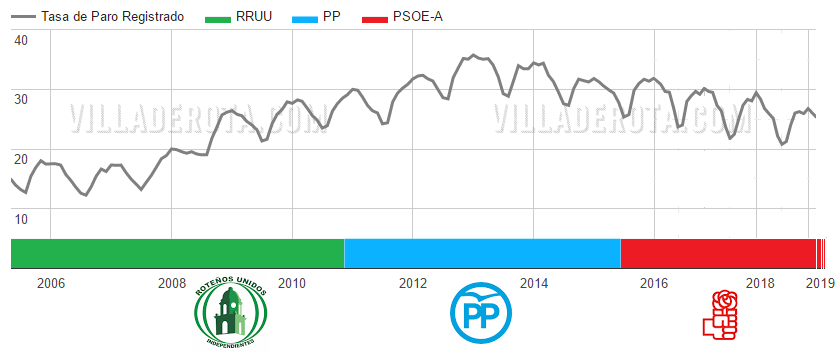 {fastsocialshare}
{fastsocialshare}
Demographics
{fastsocialshare}
According to the latest demographic data provided by the Junta de Andalucía in 2014, the total population of the Villa de Rota is 29,179, with 14,570 men and 14,609 women. The percentage of the population under 20 years of age is 21.25% (23.58% in 2006) while that of the population over 65 is 13.79% (11.45% in 2006).
The increase in the population of our Villa from 2004 to 2014 was 9.32%. Noteworthy is the number of foreigners registered until 2014, which was 1,070, 3.66% of the total population, most of North American, German, Dutch and Belgian nationality. Most parts of the US population are retired military and family members. The rest of the nationalities indicated to include a previously tourist sector that has been recurring for consecutive years and trips, thanks mainly to climate and proximity to the sea, they have chosen to reside continuously or in summer in our city during their retirements.
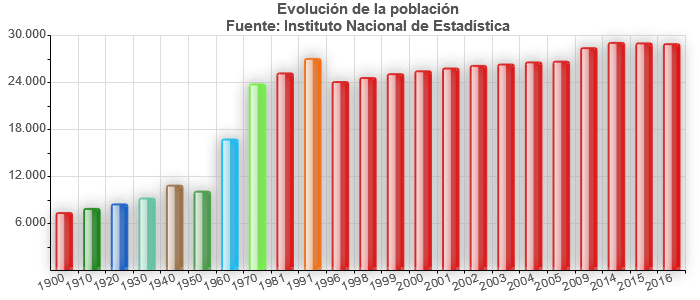
Finally, we must indicate that our Villa is divided into 3 nuclei: Rota "Sur", Rota "Norte" (Costa Ballena with 401 inhabitants registered) and Rota "Naval" (128 inhabitants registered with residence in the military compound).
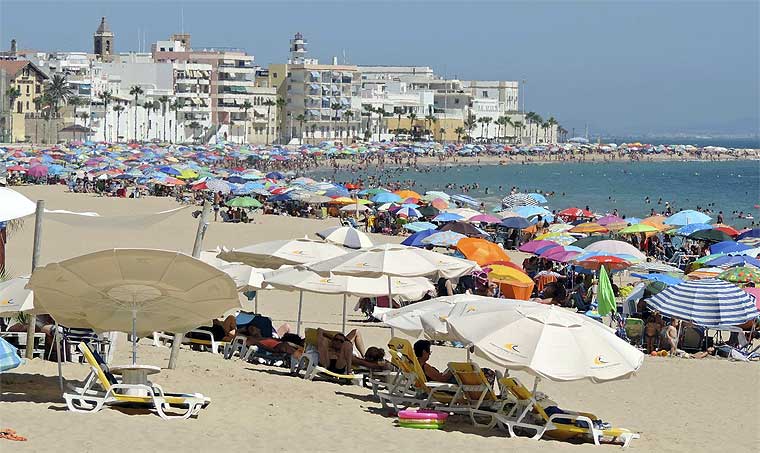
Apart from these demographic data, it should be noted that the total population of the Villa triples during the summer months exceeding 100,000 inhabitants. Likewise, the American population residing inside and outside the military compound of the Naval Base is not counted in the total population and is estimated at about 6000 inhabitants in the year 2016.
{fastsocialshare}About Rota
{fastsocialshare}
The town of Rota is a Spanish municipality located in the Province of Cádiz, Andalusia. Situated on one side of the Bay of Cádiz in the Atlantic Ocean, it is halfway between Portugal and Gibraltar and is predominantly a tourist town, a holiday destination for travelers from all over Europe..
In the year 2009 it had 28,516 inhabitants. Its surface area is 84 km² and with a density of 339.44 inhabitants / km². Coordinates: 36°37′N 6°21′W. It is located near the city of Jerez de la Frontera and 36 kilometers away from the provincial capital, Cadiz. It belongs to two associations, the Association of Municipalities of the Bay of Cadiz yalong with the municipalities of Cadiz, Jerez de la Frontera, El Puerto de Santa María, San Fernando, Chiclana and Puerto Real; and the Association of Municipalities of the Lower Guadalquivir that comprises municipalities of Northwest Coast of Andalusia. In the area there is also Naval Station, which is the largest source of employment in the town.

Archaeological evidence suggests that there was a Bronze Age settlement on the present site of Rota. The current town was founded by the Phoenicians at approximately the same time as Cádiz. Rota is assumed to be the same city known as Astaroth of the Tartesian empire. It later passed to the Romans, who knew the town as Speculum Rotae.
Following the arrival of the Moors in Spain, the city became known as Rabita Rutta ("watchtower of Rota"), from which it derives its present name. From 1248 onwards, the Moors were gradually expelled from Spain, and the city became Christian..
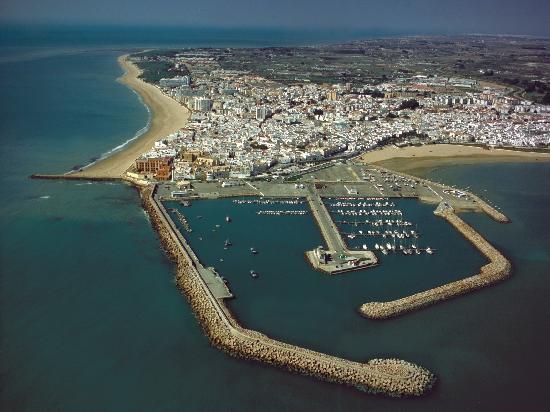
In 1297, Sancho IV awarded the town to Alonso Pérez de Guzmán in honour of his defence of Tarifa. Later, Pérez de Guzmán gave it to his daughter, Isabel, as a wedding present when she married Fermin Ponce de León, Maestre of Alcántara and First Lord of Marchena. Construction of the Castillo de la Luna (Castle of the Moon) had begun in 1295, two years prior to the bequest to Pérez de Guzmán, as part of Sancho IV's effort to develop strong coastal defenses, especially near the entrance to the Mediterranean Sea. During the Middle Ages, the town was an important port for trading with North Africa. In 1780 the 11th Duke of Arcos died without issue, and the city was rendered to the Duke of Osuna.
Nowadays Rota is a cosmopolitan and modern town that is proud of its traditions and welcome people from all over the world with a smile and to the sound of the waves breaking.
{mosmap width='100%'|height='450'|lat='36.6262132'|lon='-6.3686071'|zoom='7'|zoomType='Large'|zoomNew='0'|mapType='Satellite'|showMaptype='1'|overview='0'|text='Rota (Cádiz)'|tooltip='Rota'|marker='1'|align='center'|lightbox='0'}
{fastsocialshare}
Subcategories

VilladeRota.com es una web dedicada a la localidad de Rota (Cádiz): Nuestro más sincero homenaje a la ciudad que nos vió nacer, crió, acogió... Allá donde mar, tierra y cielo son a veces sólo uno.



